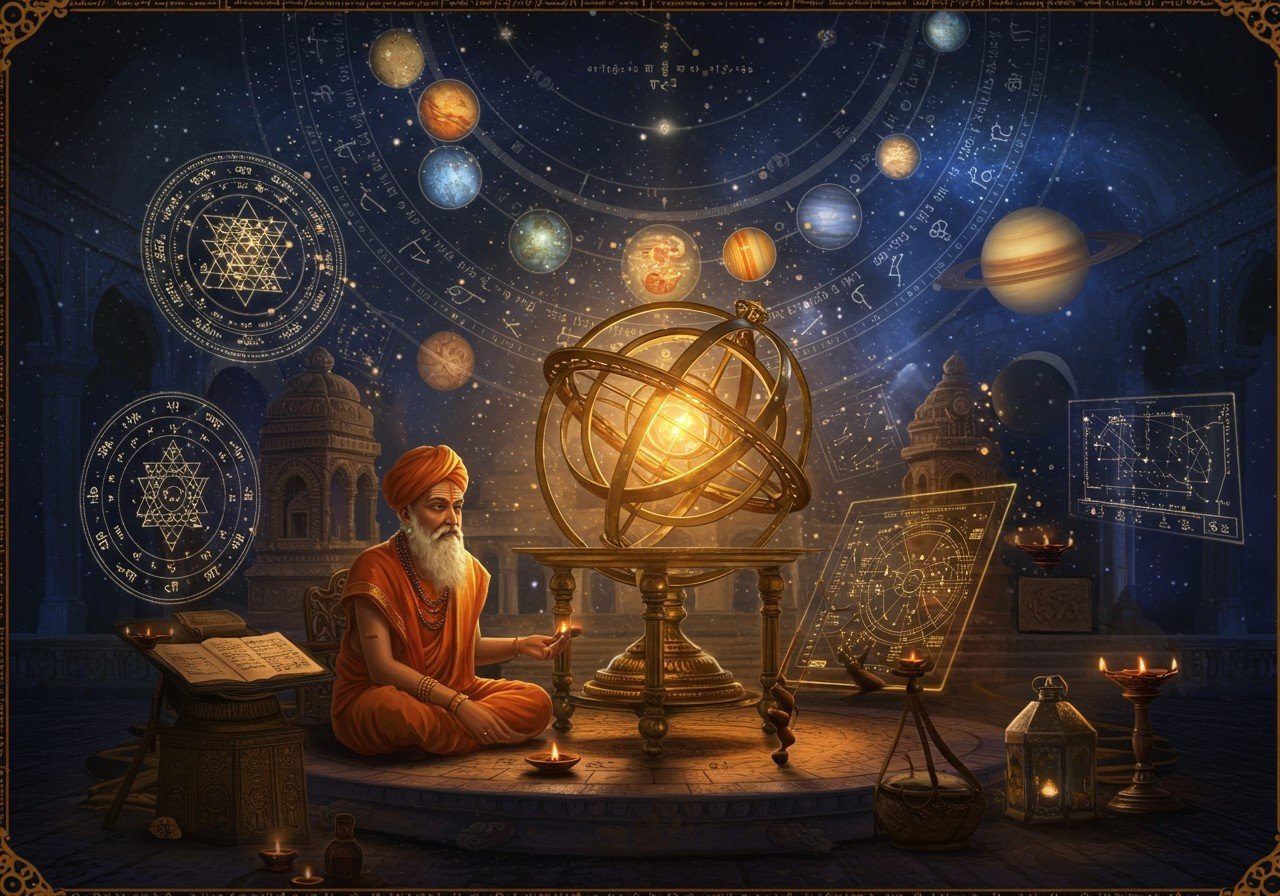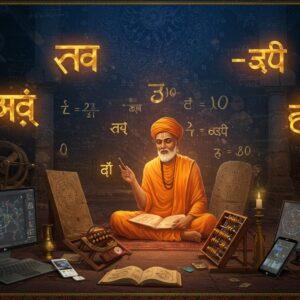Mathematics, Astronomy, and Timekeeping in Hindu Culture

In Hindu tradition, the concepts of mathematics, astronomy, and timekeeping are deeply interwoven, forming a sophisticated system for understanding and marking the passage of time. This system, rooted in ancient wisdom, reflects the cosmic cycles believed to influence daily life and rituals. It serves as a bridge between the earthly and celestial realms, connecting individuals to the cosmos and preserving cultural heritage. At poojn.in, we understand the significance of these traditions and offer a wide array of products and resources to support your spiritual journey.
The Hindu Calendar: A Lunisolar Approach
The Hindu calendar distinguishes itself through its lunisolar nature, harmonizing both lunar and solar cycles. The year is segmented into twelve months, guided by the phases of the moon. To synchronize with the tropical year, an extra month, known as Adhika Masa, is incorporated periodically. This intricate system ensures that festivals and observances maintain their seasonal relevance.
-
Nakshatras (Lunar Mansions): These 27 lunar constellations play a crucial role in timing rituals and ceremonies, providing a celestial framework for important events. Each nakshatra is associated with specific deities and energies.
-
Tithis (Lunar Days): Tithis are the lunar days, serving as the foundation of daily timekeeping. They are meticulously calculated based on the changing relationship between the sun and moon, reflecting the ebb and flow of cosmic energies.
-
Paksha (Lunar Fortnights): Each lunar month is divided into two halves, or pakshas: the Shukla Paksha (waxing moon) and the Krishna Paksha (waning moon). These fortnights are associated with different energies and are considered auspicious for specific activities.
-
Samvatsara (60-Year Cycle): The 60-year cycle, or Samvatsara, holds profound cultural and religious significance. Each year within this cycle has a unique name and is believed to carry specific qualities that influence events and individuals.
This sophisticated structure of the Hindu calendar ensures that rituals and ceremonies are aligned with the cosmic rhythms, reflecting a deep reverence for tradition and the universe. To enhance your understanding and observance of these practices, explore the resources available at poojn.in. Our curated collection includes a wide variety of items, from traditional calendars to ritual accessories, designed to support your spiritual journey.
Delving into Hindu Calendar Astronomy Calculations
Hindu culture masterfully blends mathematics, astronomy, and timekeeping, creating a rich tradition that guides daily life and sacred rituals. The Hindu calendar’s calculations epitomize this integration, balancing lunar and solar cycles with ancient wisdom.
The Lunisolar System: Balancing Lunar and Solar Cycles
The Hindu calendar’s lunisolar approach harmonizes lunar months with the solar year. This delicate balance maintains alignment with both the moon’s phases and Earth’s journey around the sun.
Lunar Months: Guided by the Moon’s Rhythms
Each lunar month spans approximately 29.5 days, reflecting the time between new moons. Their names derive from nakshatras, with the full moon’s position within a specific nakshatra determining the month’s name.
Solar Months: Marked by Sankranti
Solar months begin with Sankranti, the sun’s transition between zodiac signs. Their lengths vary, ranging from about 29.26 to 31.80 days, accommodating Earth’s elliptical orbit.
Tithis: The Lunar Days
A tithi, or lunar day, is precisely calculated using the difference in longitude between the sun and moon. Each tithi represents the time it takes for the moon’s longitude to advance 12° relative to the sun’s. These lunar days vary in duration, lasting between 20 and 27 hours. The calculation is represented by the formula:
Tithi = (Lunar Longitude – Solar Longitude) / 12
Note: If the result is zero or negative, 360° is added.
Leap Months: Maintaining Harmony
To reconcile the lunar year (around 354 days) and the solar year (approximately 365 days), an intercalary month, Adhik Maas, is added roughly every 2.7 years. This addition keeps festivals and rituals aligned with the seasons.
Key Concepts and Calculations:
The Panchanga, a traditional Hindu almanac, acts as a guide for festivals and events, seamlessly blending scientific calculations with cultural practices. It considers both Chandra Mana (lunar movement) and Saura Mana (solar movement).
Historical Context:
Ancient astronomers like Aryabhata significantly advanced our understanding of celestial movements. Aryabhata proposed that Earth rotates on its axis and accurately calculated its circumference, laying the foundation for modern astronomy.
How Poojn.in Supports Your Observance of Hindu Timekeeping
Poojn.in provides a diverse selection of products to facilitate accurate Hindu timekeeping and astronomical calculations. Explore our offerings:
-
Panchang (Hindu Calendar): Obtain detailed panchangs providing essential information on tithi, nakshatra, yoga, and karana, enabling precise ritual timing. We offer a variety of formats, from traditional printed versions to digital apps.
-
Brass Sundials: Explore beautifully crafted brass sundials, enabling you to track time according to ancient Hindu methods. These sundials serve as both functional tools and exquisite decorative pieces.
-
Astrology Tools: Discover high-quality brass and copper instruments used in astrological calculations, ensuring accuracy and authenticity in your practices.
Find additional resources and products, including sacred geometry items, ritual timing guides, and puja items, at poojn.in. We offer pan-India delivery and secure online payment options.
Embracing Tradition with Modern Convenience
In today’s dynamic world, the Hindu calendar continues to be a valuable compass, guiding us with ancient wisdom and connecting us to cosmic rhythms. Its complex calculations and celestial insights ensure that our rituals and festivals harmonize with the universe. As we honor these traditions, we also embrace the benefits of modern technology. Online resources and tools empower us to understand and follow the Hindu calendar with unprecedented ease. Poojn.in bridges this gap, offering a curated selection of products and information that allow you to uphold your cultural heritage gracefully and seamlessly. We empower you to remain connected to your roots while navigating the complexities of modern life. Visit poojn.in today to explore our comprehensive collection.
FAQs: Mathematics and Astronomy in Hindu Timekeeping
What is the core principle of the Hindu calendar system? The Hindu calendar is a lunisolar system, harmonizing lunar months with the solar year. This approach determines auspicious dates for festivals and ceremonies. Poojn.in offers a wide range of products to help you understand and follow the Hindu calendar.
How do mathematics and astronomy intersect in Hindu timekeeping? Mathematical and astronomical calculations pinpoint the positions of celestial bodies, crucial for timing important rituals and festivals. Poojn.in provides resources such as panchangs and astrological tools to assist with these calculations.
What is the significance of cosmic cycles in Hindu timekeeping? Cosmic cycles, representing the repeating patterns of celestial events, are essential for aligning human activities with the universe’s movements, believed to attract positive energy. Poojn.in offers educational materials that delve deeper into these concepts.


